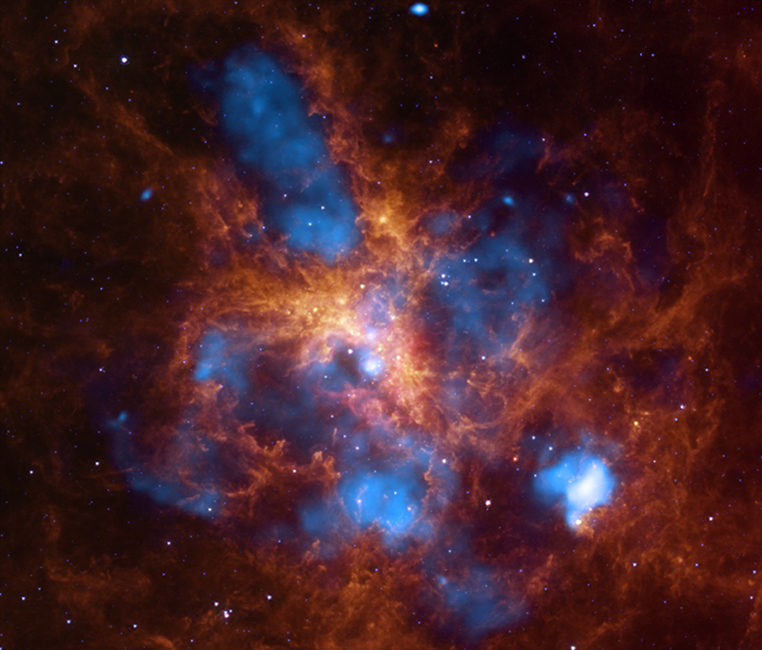
 Credit: NASA/CXC/PSU/L.Townsley et al.; Infrared: NASA/JPL/PSU/L.Townsley et al.
Credit: NASA/CXC/PSU/L.Townsley et al.; Infrared: NASA/JPL/PSU/L.Townsley et al.
Stellar Spider Web
The Clouds of Magellan are prominent satellite galaxies in orbit around the Milky Way. They are named for Ferdinand Magellan, who saw them during his circumnavigation of the globe. The larger of the two clouds has formed stars at a furious rate, and contains some of the brightest and most massive star forming regions in the local Universe. One particularly massive and bright stellar nursery is the Tarantula Nebula, 30 Doradus. The relative proximity of 30 Doradus (about 160,000 light years from us) allows astronomers the chance to study in detail the way in which bursts of star formation proceed. The image above is a composite of an infrared image obtained by the Spitzer Space Telescope and an X-ray image (in blue) obtained by the Chandra X-ray Observatory. The infrared emission shows cooler gas and dust, surrounding hot, high pressure bubbles of million degree, X-ray emitting gas. This hot gas is produced by the strong stellar winds of thousands of massive stars contained in this small region of the Large Magellanic Cloud. These high-pressure bubbles may compress gas and dust on their peripheries and perhaps trigger the birth of new stars.
Published: November 14, 2011
<
HEA Dictionary ● Archive
● Search HEAPOW
● Other Languages
● HEAPOW on Facebook
● Download all Images
● Education ● HEAD
>

Each week the HEASARC
brings you new, exciting and beautiful images from X-ray and Gamma ray
astronomy. Check back each week and be sure to check out the HEAPOW archive!
Page Author: Dr. Michael F. Corcoran
Last modified Tuesday, 27-Feb-2024 10:06:53 EST


